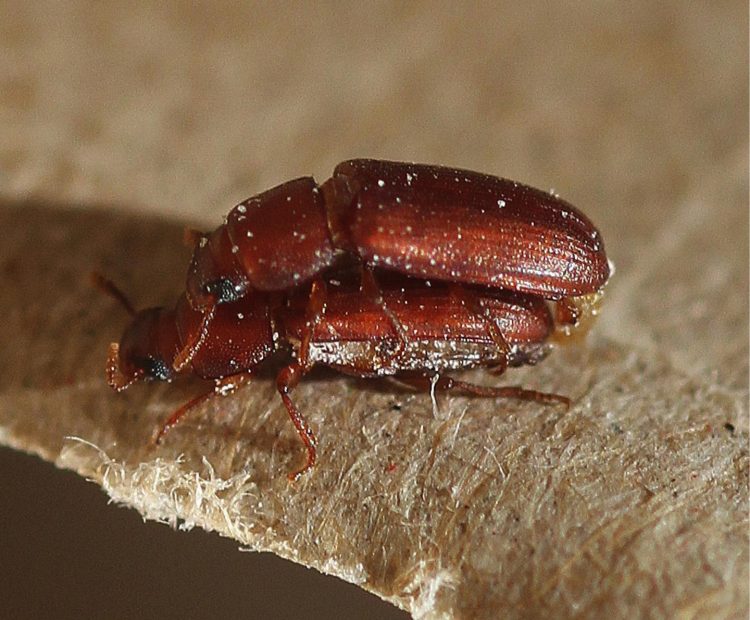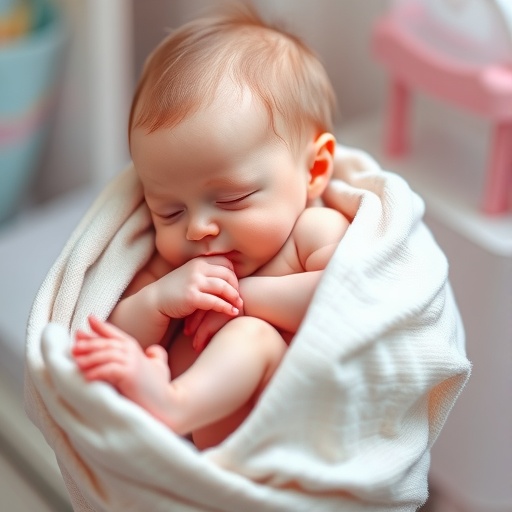
Credit: University of East Anglia
Beetles have evolved sophisticated mechanisms to reproduce despite warmer temperatures – according to new research from the University of East Anglia.
A new study published today reveals that male and female flour beetles have evolved mechanisms that allow their sperm and eggs to quickly cope with increasing environmental temperature variation.
The research team say that the findings will help species buffer themselves against climate change.
Lead researcher Prof Matt Gage, from UEA’s School of Biological Sciences, said: “Rising and more variable global temperatures pose challenges for biodiversity – especially for reproduction which is thermally sensitive.
“Sperm and egg function are key to continuing life, and in most species they have to function in very variable environments – for example fish sperm being released into the sea, or eggs laid by insects on plants.
“We already know that temperature has a big effect on sperm and egg function, and our previous research has shown that heatwaves damage sperm and male fertility in insects.
“We wanted to find out more about how these important reproductive cells cope with environmental variability.”
The research team used the red flour beetle (Tribolium castaneum) as a model to understand the effects of warmer and cooler environments on reproduction. Most animals are ‘cold blooded’, so a whole series of biological functions – including sperm and egg function and reproduction – are affected by changes in their thermal environment.
The study examined how thermal variation affected sperm and egg development, and whether males and females could produce sperm and eggs that ‘matched’ the environment into which they were going to swim, fertilise and develop into offspring.
Their first finding was that sperm and egg sizes quickly changed depending on the temperature that the adult produced them in. In warmer conditions, sperm got smaller, while eggs got bigger.
Prof Gage said: “This opposing response between males and females was an interesting clue, as it suggested something more sophisticated was going on than a single metabolic response by both types of cells in one direction.
“We then did transplant experiments to see how adults, reared to produce sperm and eggs at one temperature, performed at their same ‘matched’ temperature, or at a different ‘mismatched’ temperature. Simply, we reared adults in warm or hot environments, and then measured their sperm and egg reproductive performance in either warm or hot environments.
“Overall, our results showed – as we already know – that reproduction was much harder to achieve in hotter conditions.
“But interestingly, we found clear evidence for adaptive plasticity in sperm and egg development and function that enabled better performance in the hotter conditions.
“Both sperm and eggs made in a hotter 38oC environment performed much better in that hot environment, compared with sperm and eggs made in a cooler 30oC environment. And we found the opposite for eggs and sperm made in the cooler 30oC environment, which functioned much better when it was cool.
“In the hotter environments, our experiments showed that this adaptive thermal matching allowed serious improvements in reproduction. Males could double their reproductive success, and females increased theirs by 33 per cent – compared to reproduction in mismatched environments.
“We have therefore found evidence that males and females tailor something inside their sperm and eggs which allows them to functionally match their own current thermal environment to the imminent reproductive environment, and they can do this over a few days of being exposed to a different temperature.
“This all makes evolutionary sense, because both sperm and egg function are temperature-dependent, and sperm and eggs in most species operate in variable environments, especially with regard to temperature. Being able to match sperm and egg function to the temperature of the reproductive environment will give individuals greater success, which is what evolutionary selection works upon.
“We don’t yet know exactly how these mechanisms operate, which could involve functional changes in sperm and egg biology, or a rapid epigenetic re-programming to optimise fertilisation and embryo development, but the work does reveal that species can carry new mechanisms for buffering themselves in different ways against climate change.”
###
The work was funded by the Natural Environment Research Council, the Commonwealth Scholarship Commission, and the Swiss National Science Foundation.
‘Adaptive thermal plasticity enhances sperm and egg performance in a model insect’ is published in the journal eLife on October 1, 2019.
Media Contact
Lisa Horton
[email protected]
Original Source
http://www.
Related Journal Article
http://dx.





